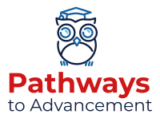Whether you are looking to take your tech career to new heights or are seeking to upskill in your current role, making the correct choice of programming language can put you ahead. In this guide, we will look at several languages and discuss the benefits of each and where they work best.
Python
Python is a programming language that has been around since 1991. It’s predominantly helpful in developing web servers, writing scripts, data science, and as a tool in software development.
It is a wide-reaching language with plenty of applications, and Python seems to be growing as a popular choice. You’ll often find it used in web apps. If you’ve ever used Reddit, then you have seen Python in action.
Even if you haven’t noticed Python before, you’ve certainly seen websites built with it. See if these ring any bells:
- Spotify
- Dropbox
- Uber
- Google!
Python’s versatility and ability to parse data quickly means that it is often the go-to choice for anyone pursuing a technology career.
If you are new to Python, there are plenty of resources to start learning this programming language. You could consider enrolling in a coding bootcamp. Alternatively, there are several courses on Udemy. Python even has their own website.
SQL
You’ll hear SQL referred to in a couple of ways. Some people call it “S-Q-L,” and others will refer to it as “sequel.” Either pronunciation is acceptable. It stands for “Structured Query Language,” and there is a clue in the name.
SQL is a computer language that communicates with databases. SQL makes it easy to pull information out of a database. What information? Pretty much anything stored on a file!
Imagine a digital database as a library. The shelves inside are data tables, and the books are files. The database architecture could be any programming language, such as C++, Java, or Python.
You can think of SQL as a very well-trained librarian who knows exactly how to get any file you ask for quickly. Provided you know the right questions, SQL is the language you and the librarian speak to make sure you get the correct file!
SQL is an excellent programming language for those dealing with a lot of data. It has wide-ranging applications for plenty of industries, from human resources to administrators and statisticians.
It is also an easy language to learn and has wide-ranging possibilities. Most companies in today’s world use databases, and knowing how to find information quickly makes you a highly attractive prospect.
As SQL is a valuable programming language for employers, there are many opportunities to learn and master SQL.
Java
Java has been one of the most popular programming languages for years! Why? Well, for a start, it can operate entirely independently of the platform.
From computers to mobile phones, Java is the dominant language used to program them. Not to mention, many financial institutions use Java for their financial trading systems! You’ll find it anywhere where there are electronics — even refrigerators and TVs use Java!
There are plenty of advantages to using Java, including ease of use. A Java development kit will let you see bugs and errors and fix them quickly. Java can run on different types of computers and cross-platform, making it a highly functional programming language.
You don’t have to go far to start learning Java or becoming a Java Web Developer. Udacity’s Java Web Development program will help you prepare you for a career as a Java Web Developer.
R
As programming languages go, R goes a long way back. Although first released in 1995, the first stable version wasn’t available until 2000. R is an updated follow-on from a language first developed in 1976, called S.
You’ll find it used predominantly by statisticians. It is the perfect language for data analysis. It is free to download, and unlike many programming languages, R is open-source software with a large online community.
Why use a programming language for data analysis?
Simply, it makes it easy for others to see how you arrived at a result. If they know R, they can recreate or repeat your analysis! It also allows others to add suggestions or identify flaws in your analysis.
Another benefit of R is that it is relatively simple to learn. The basis of the language is that you apply a function to an object. The function output could be an average or sum. The object can be any data you choose, represented numerically or even outputted as a chart or other simple graphic.
There are numerous places where you can learn R. Code academy offers courses, and there is also a dedicated RStudio guide. You may even have to learn it for a job training program if you work in data analysis.
Go
Go is a programming language described as “the server language of the future.” Google developed it to answer frustrations that programmers faced with Python, Javascript, and C++. Google says that Go speeds up work processes.
Go is ‘cleaner’ and less repetitive than more traditional (and older) programming languages. The main aim is to increase safety and reduce complexity and clutter.
Who uses Go? There is a huge list of companies, and it is growing by the day!
As an alternative to Python, PHP, and Java, Go has proven useful for creating web apps, web scraping, and server development. As with languages like Java, it can run on all types of systems.
If you want to learn Go, there is no better place than to start at the source with Golang.org. It offers virtual tours with modules to get you started. It is a great programming language to learn if you are interested in becoming a software engineer.
CSS
Learning CSS is a vital skill if your goals are webpage design. Short for ‘cascading style sheets,’ it focuses primarily on how a webpage displays to the end-user. If HTML is the building block, CSS is the architect who plans where those blocks should go.
You can use CSS to alter page layouts, banners, buttons, font colors, and the accessibility of a website. Often described as a cornerstone of the world wide web, back-end developers who know HTML and Javascript, two other programming languages, used it primarily in web page design.
With the proliferation of website templates making it increasingly hard for web pages to stand out, CSS lets designers create unique pages distinct from the cookie-cutter styles used by many businesses.
CSS is the ideal choice for anyone considering a tech career or a digital design career. In fact, it is pretty much a requirement.
The benefits of CSS are numerous. It doesn’t require you to copy lines of code again and again, as you can reuse and apply it to different web pages for the same effect. It is cross-platform, too, with all browsers using CSS.
There are several online courses where you can learn CSS. Upskill has a coding bootcamp, and LinkedIn does as well.
HTML
HTML stands for ‘HyperText Markup Language,’ and it tells web page browsers how to display information on the page. With applications in web page design, there is no limit to what you can do.
Using HTML, it is possible to adapt the font, layout, images, and media display. You also can manipulate the behavior of buttons and menus, and much more! It works based on ‘tags’ that determine the behavior of the elements.
HTML is a simple language to learn. But, ideally, you should pair it with CSS if you want to pursue a tech career and market yourself as ‘the complete package’ in website design.
However, it isn’t only for webpage designers. Experts in search engine optimization (SEO) and digital marketers can benefit too. How a webpage looks and performs can help a business stand out from the crowd!
HTML has been around since the birth of the internet, and as a result, there are plenty of online training programs.
JavaScript
If you thought that JavaScript was only to make moving images in webpage browsers, you’d be wrong. While this is its traditional use, in today’s world, it is also applicable for creating games, managing streaming services, and generating popups.
It has become a very prominent language for several reasons—namely, cookies. For example, in affiliate marketing, the humble (javascript) cookie logs data about what a user does.
Ever notice how advertisements seem to reflect what you were looking at half an hour ago? Yep, that’s JavaScript in action.
Again, this programming language is a boon for web page designers. It forms the last leg of a three-legged stool if you want to be a full-stack web designer.
The advantages of learning JavaScript are numerous. It is an excellent language for beginners as it is pretty easygoing. It is one of the most popular programming languages out there. Furthermore, you get to create stunning, eye-catching effects and functionality.
There are numerous ways to start learning Javascript: through a job training program or getting an online degree. There are plenty of opportunities to give it a try!
Conclusion
There are a lot of choices when it comes to programming languages. Some, such as SQL and R, are great for data analysis. HTML, CSS, and JavaScript are essential in web development. Java is effective for developing apps or creating software, while Python’s versatility is speeding up its growth. Whatever you decide, there is a multitude of online resources to discover more.



